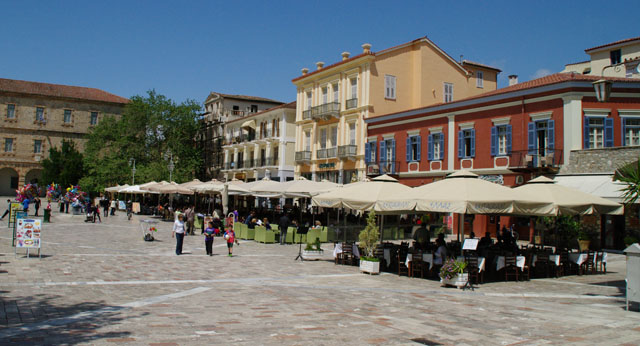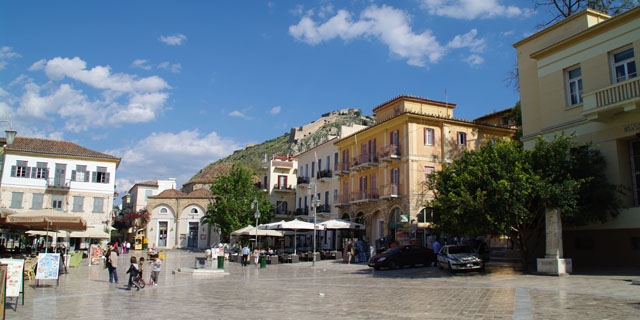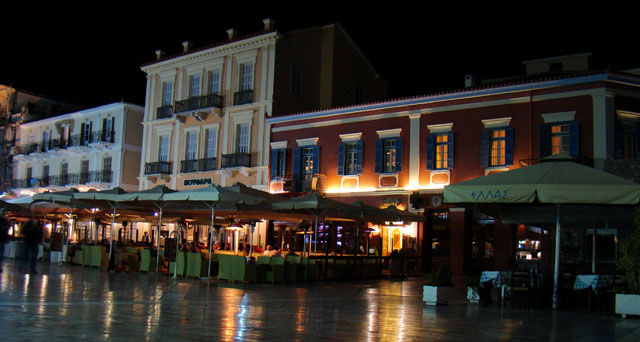Syndagma Square
|
Syndagma Square, the most important and historic square in Nauplion, comprises the centre of the city. It is assumed that from 1540, the time of the first Turkish occupation, the Turkish commander of the Peloponnese, Mora-Pasha, had his seraglio here. |
||
 |
||
| The importance of the square is also demonstrated by the number of times it has undergone a change of name. In the 19th century it was known as 'Platanos Square' or simply 'Platanos', for the plane tree which once occupied the centre, in the shade of which national politicians made speeches. In 1843 the name was changed to 'Ludwig Square', in honour of Ludwig, father of King Otto, who had then visited the city. In the same year, after the revolution of 3rd September 1843, when the Greeks demanded that Otto grant them a constitution, the name was changed first to Syntagma (or constitution) Square, then 'Stratonas Square', and 'King George II Square'.
The square was also once home to the residences of many of the great fighters of the Greek revolution, such as Nikitaras and Theodoros Kolokotronis. |
||
 |
||
|
The episode known to modern Greek history as 'Psorokostaina' took place here. In 1826, when the rebellious Greek nation was in dire financial need, the man who became known as the teacher of the nation, Georgios Gennadios, delivered a moving speech from under the plane tree, encouraging the people of Nauplion to contribute to the appeal for the nation. His speech was so moving that the poorest woman in the city, known mockingly as 'Psorokostaina', gave all her possessions, which were nothing more than a silver ring and a gross. |
||
 |
||
|
On the spot where the National Bank now stands, there was once the home of Kalliopi Papalexopoulou, which was built after the liberation of the city from the Turkish yoke. Mrs Papalexopoulou, the wife of the mayor of Nauplion, Spyridon Papalexopoulos, was at the head of the revolutionary movement for the removal of King Otto from Greece.
|
||
|
The exact location of the Syndagma Square can be found in Section Map. |
||



